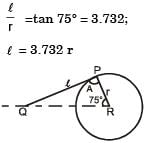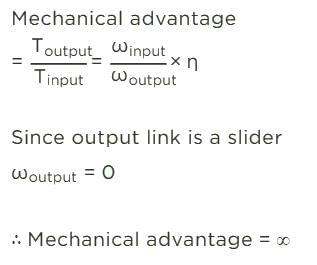GATE Past Year Questions: Dynamics of Machines | Theory of Machines (TOM) - Mechanical Engineering PDF Download
Q1: The figure shows a wheel rolling without slipping on a horizontal plane with angular velocity ω1. A rigid bar PQ is pinned to the wheel at P while the end Q slides on the floor.
What is the angular velocity ω1 of the bar PQ? [GATE ME 2023]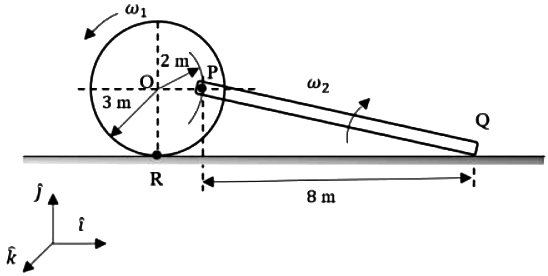 (a) ω2 =2ω1
(a) ω2 =2ω1
(b) ω2 = ω1
(c) ω2 = 0.5ω1
(d) ω2 = 0.25ω1
Ans: (d)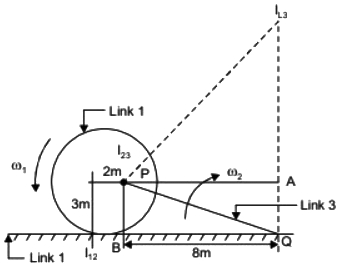 As Disc (Link 2) roll without slipping on Link 1 (surface) so their I-centre of rotation lies on point of contact to avoid relative motion in between them. So I12 lies on point of contact.
As Disc (Link 2) roll without slipping on Link 1 (surface) so their I-centre of rotation lies on point of contact to avoid relative motion in between them. So I12 lies on point of contact.
Link 2 and 3 have instantaneous center of rotation at I13 due to fixed surface of Link 1.
As per point Plies on link 2 and 3 both so, point PP has same velocity for Link 2 and 3 both.
As per Kennedy's theorem, if three plane bodies have relative motion among themselves, their I-centre must lie on a straight line. So, I23 must be on line joining I13 and I12 at point P.
By similar △PI12 B and ΔPl13 A, we have
or, I12 l13 = 0.25I23 l13 ...(i)
Velocity of point P is same w.r.t. all instantaneous rotation so,
ω1 × I12I23 = ω2 × I23l13
By equation (i), we get
ω2 = 0.25ω1
Q1: The Whitworth quick return mechanism is shown in the figure with link lengths as follows: OP = 300 mm, OA = 150 mm, AR = 160 mm, RS = 450 mm.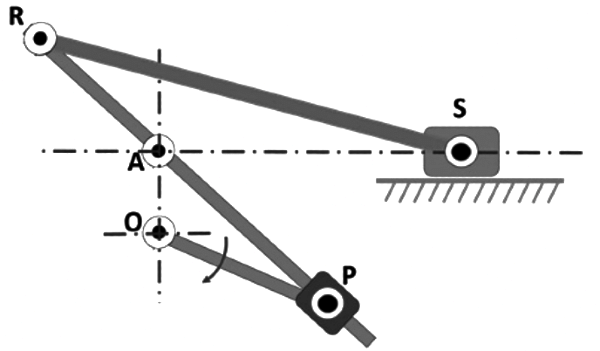
The quick return ratio for the mechanism is ________(round off to one decimal place). [GATE ME 2021 SET-1]
Ans: 1.9 to 2.1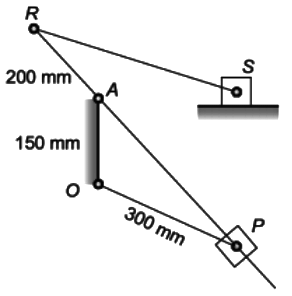
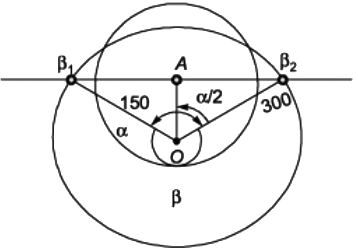

⇒ α/2 = 60º
α = 120º
β = (360º - 120º) = 240º
Q1: The crank of a slider-crank mechanism rotates counter-clockwise (CCW) with a constant angular velocity ω, as shown. Assume the length of the crank to be r.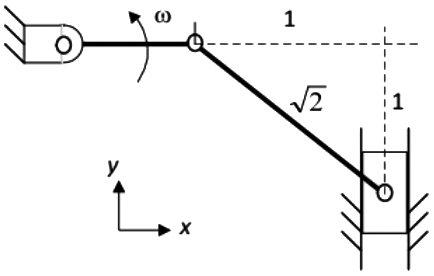 Using exact analysis, the acceleration of the slider in the y direction, at the instant shown, where the crank is parallel to x-axis, is given by [GATE ME 2019 SET-2]
Using exact analysis, the acceleration of the slider in the y direction, at the instant shown, where the crank is parallel to x-axis, is given by [GATE ME 2019 SET-2]
(a) −ω2r
(b) 2ω2r
(c) ω2r
(d) −2ω2r
Ans: (c)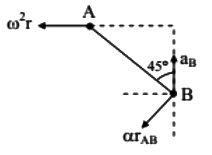 since the velocity of the point A and B are parallel ωAB = 0
since the velocity of the point A and B are parallel ωAB = 0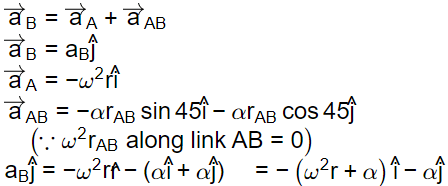
ω2r + α = 0
α = -ω2r
aB = -α = -(-ω2r) = ω2r
Question: 499319]
[1998]
[2004]

[2006]
|
87 videos|76 docs|29 tests
|
FAQs on GATE Past Year Questions: Dynamics of Machines - Theory of Machines (TOM) - Mechanical Engineering
| 1. What are the key topics covered in the Dynamics of Machines for GATE Mechanical Engineering? |  |
| 2. How can I prepare effectively for the Dynamics of Machines section in the GATE exam? |  |
| 3. What are some common types of questions asked in the Dynamics of Machines section of GATE? |  |
| 4. Which textbooks are recommended for studying Dynamics of Machines for GATE preparation? |  |
| 5. How important is the Dynamics of Machines section for scoring well in GATE Mechanical Engineering? |  |


